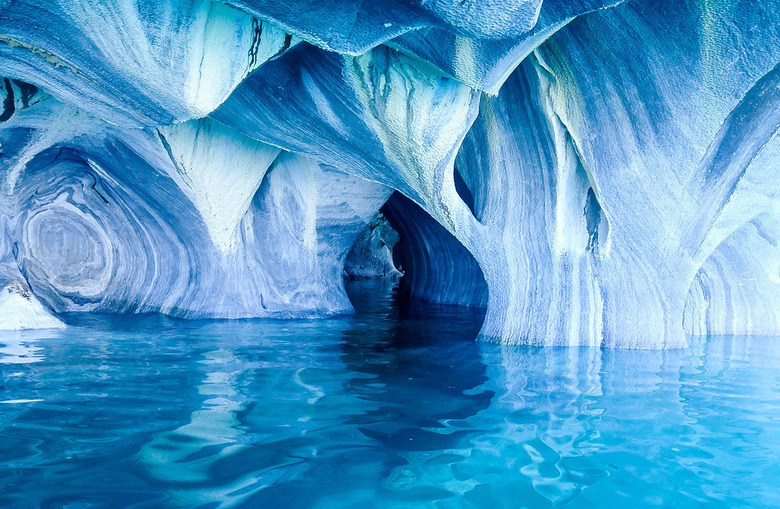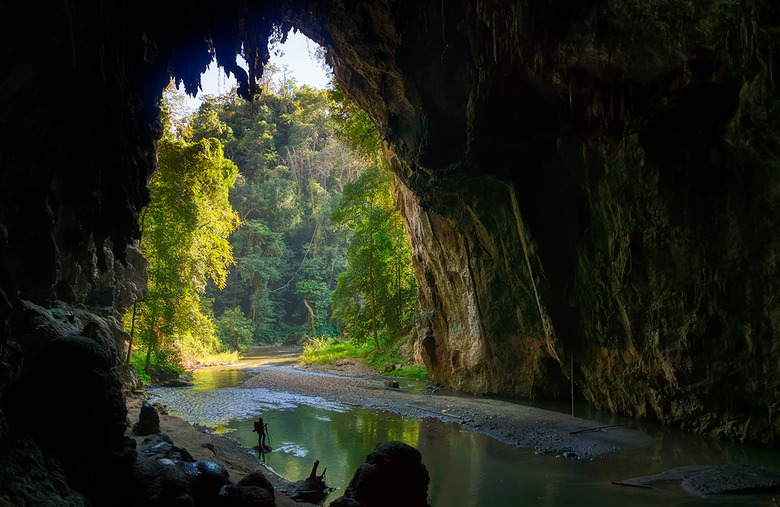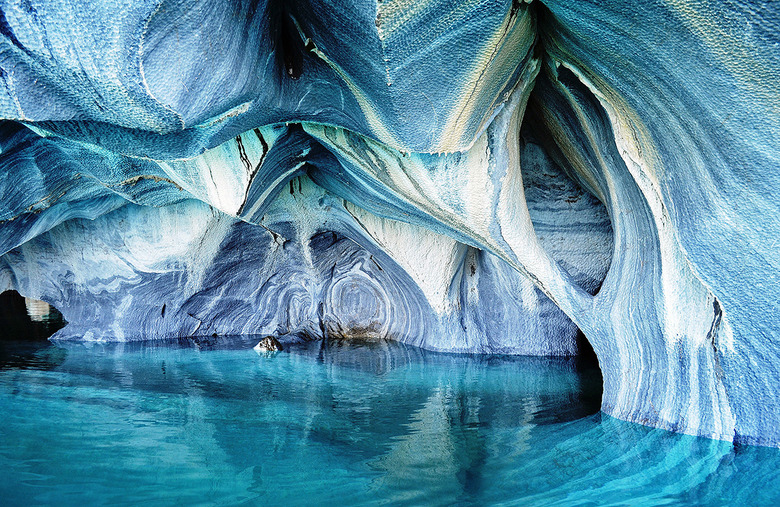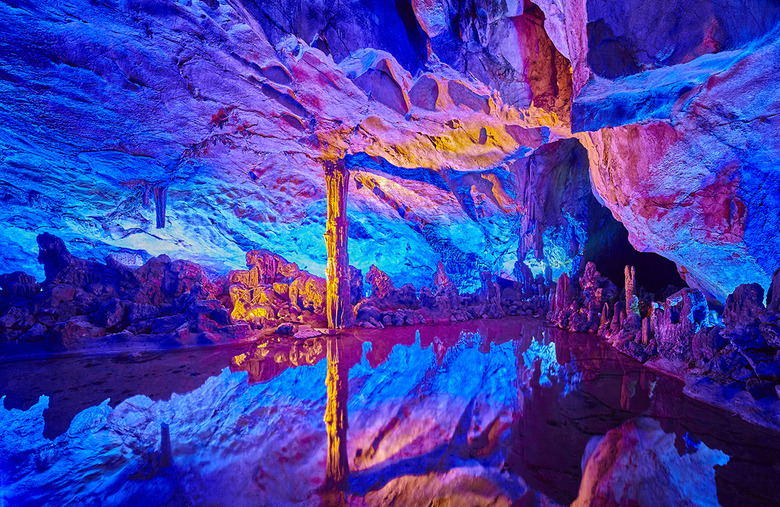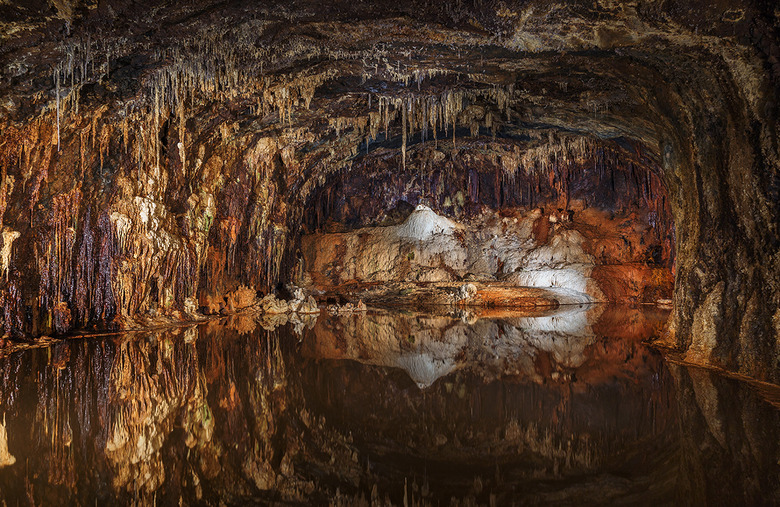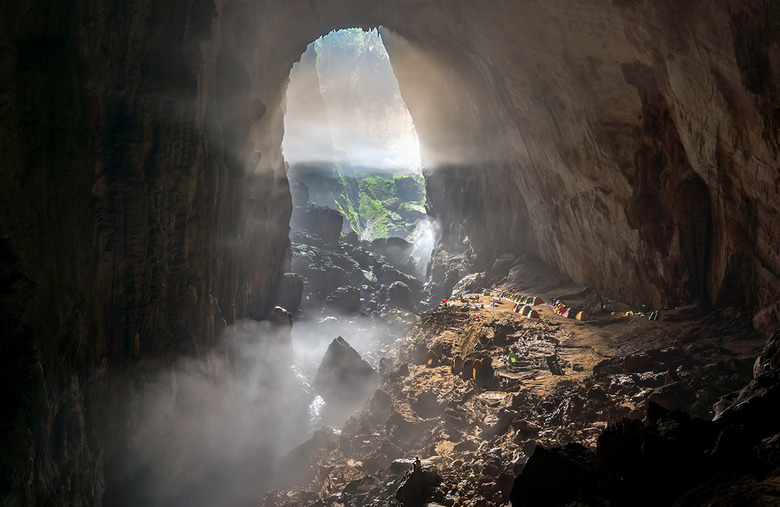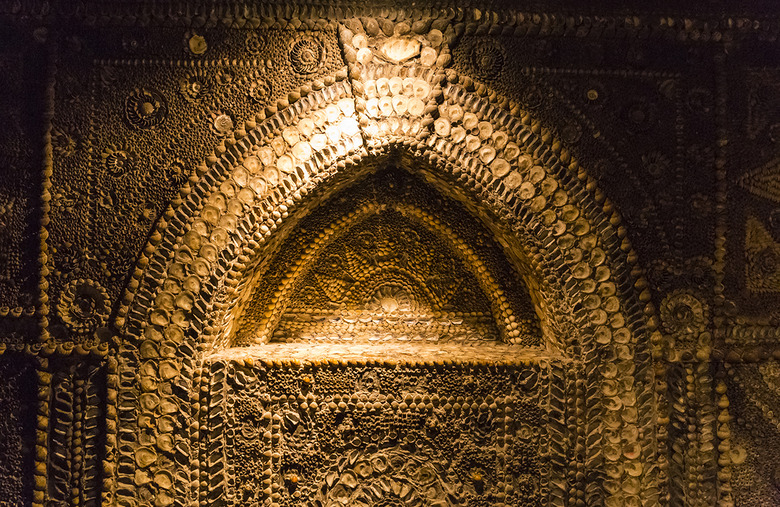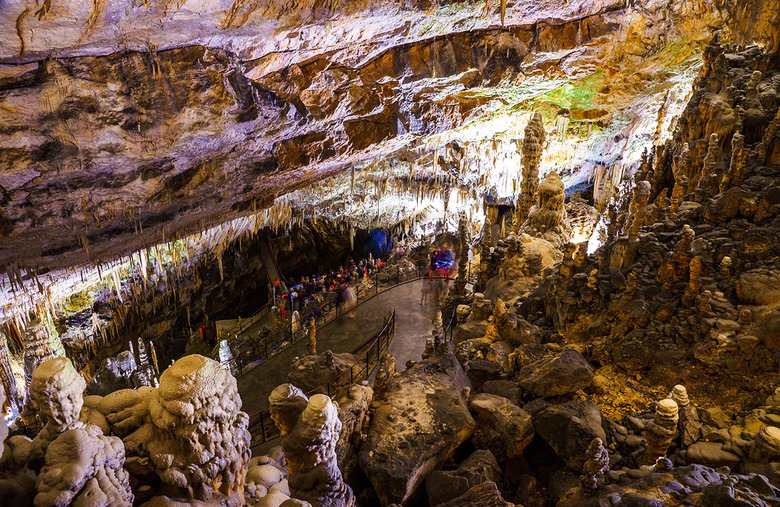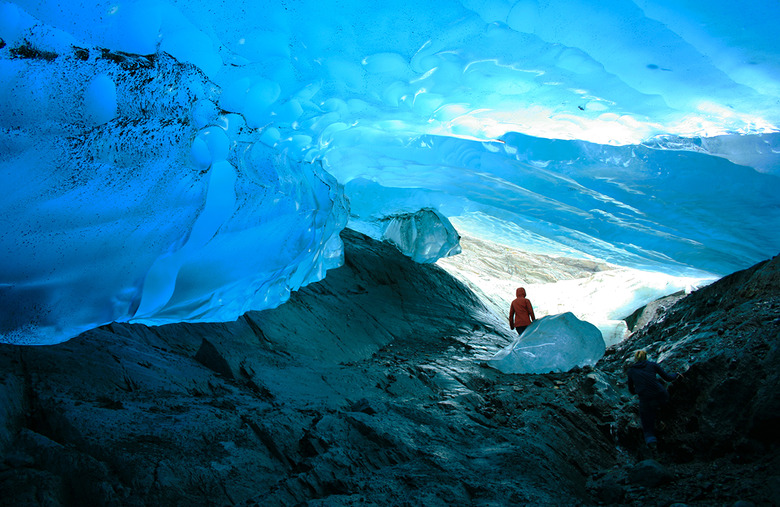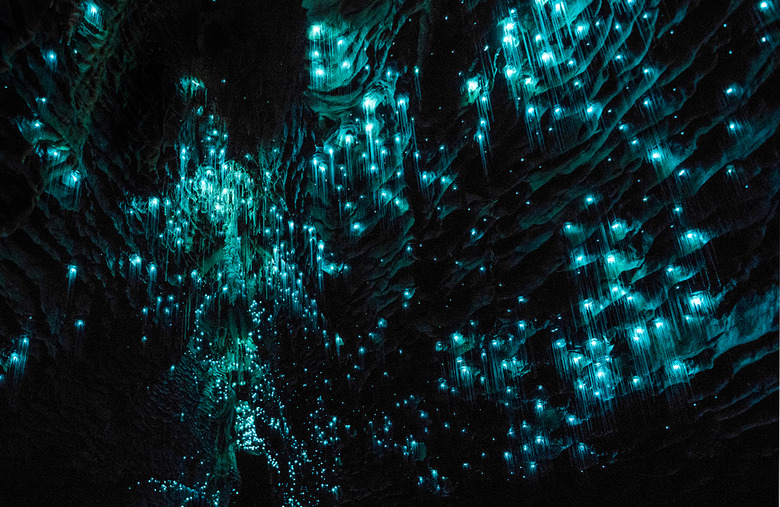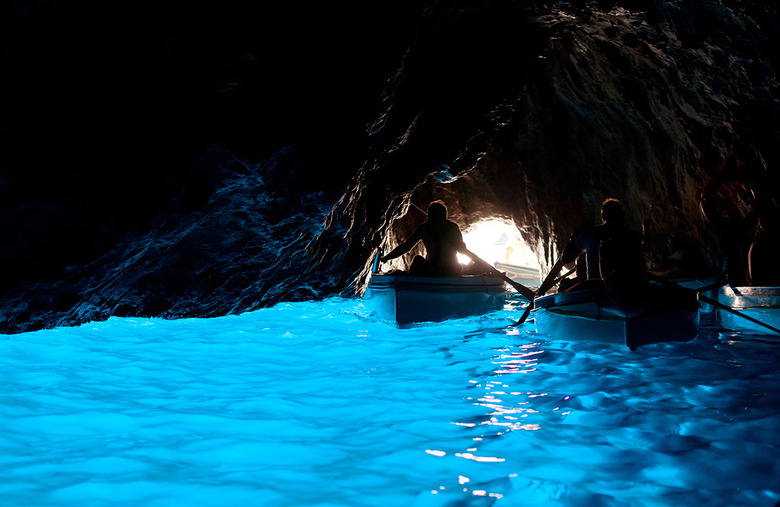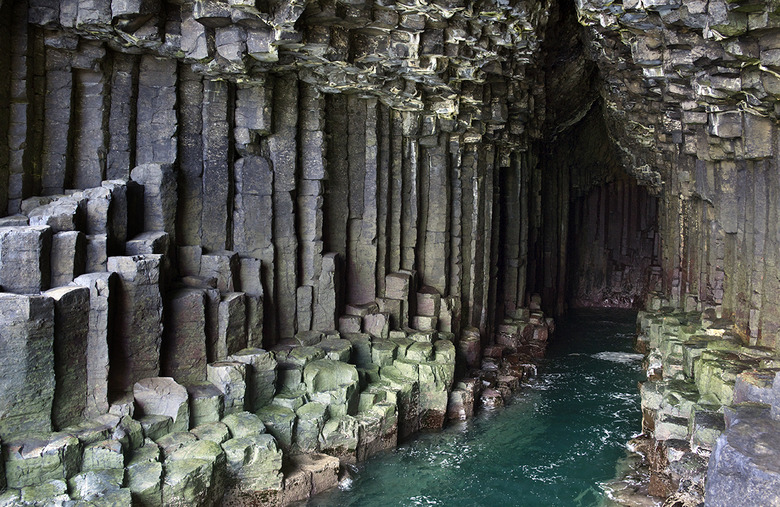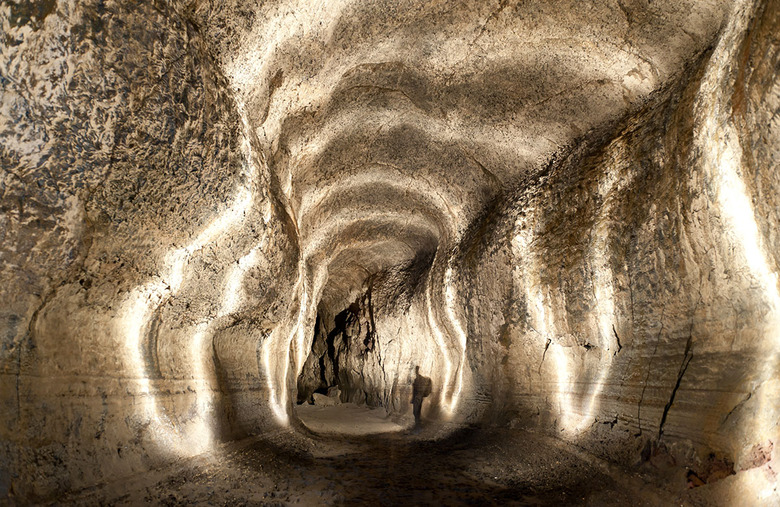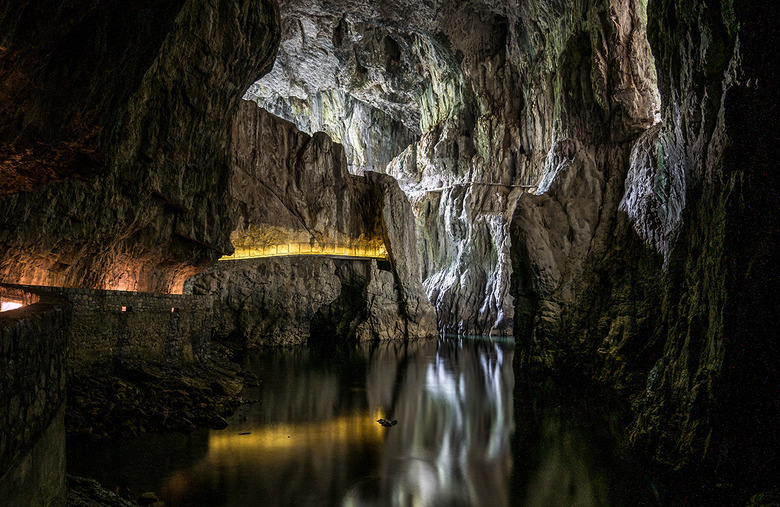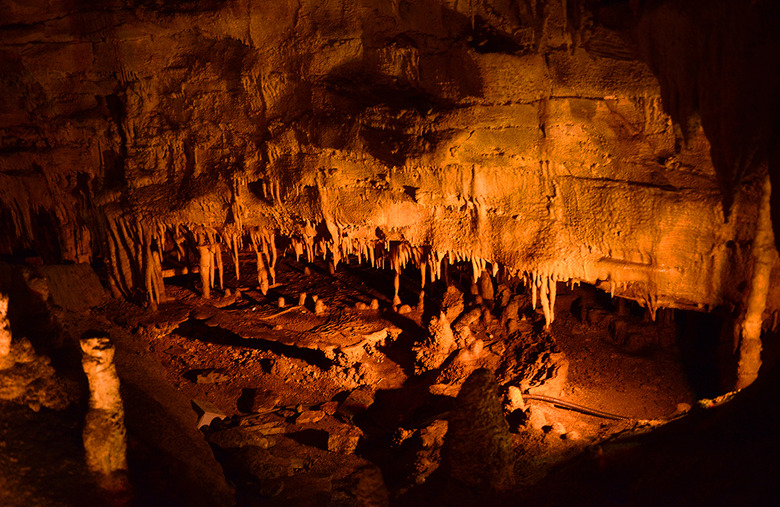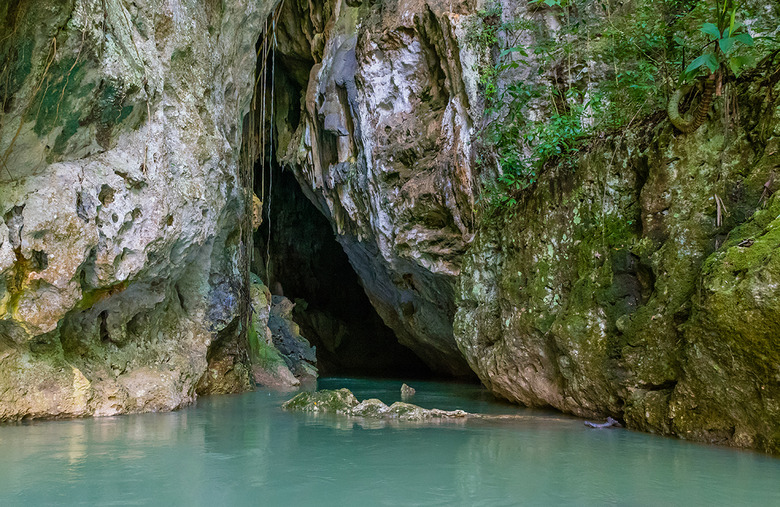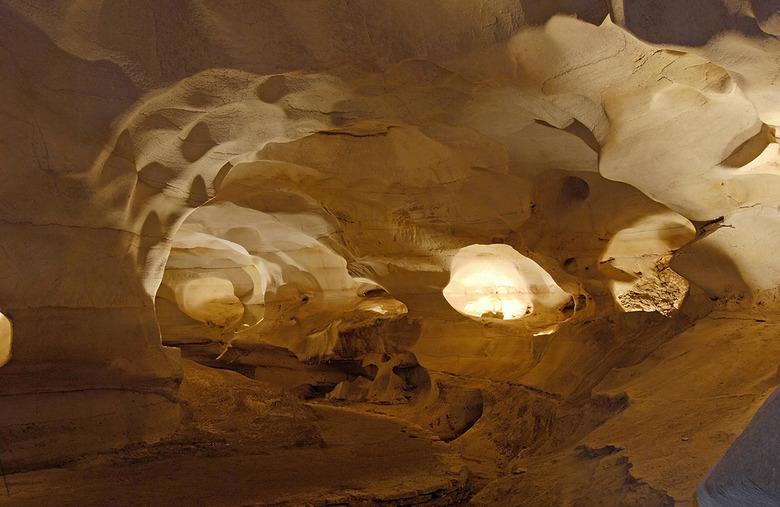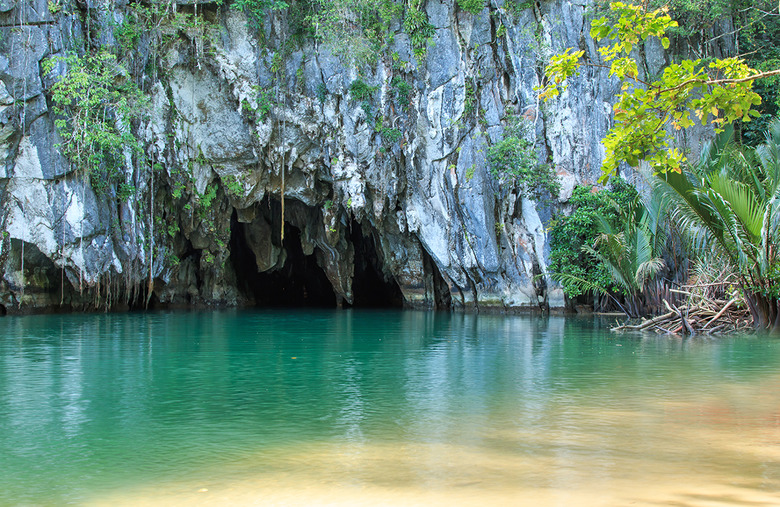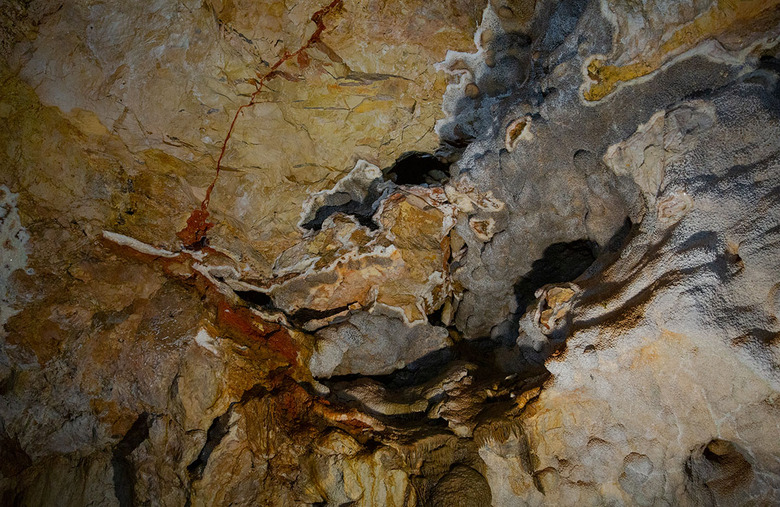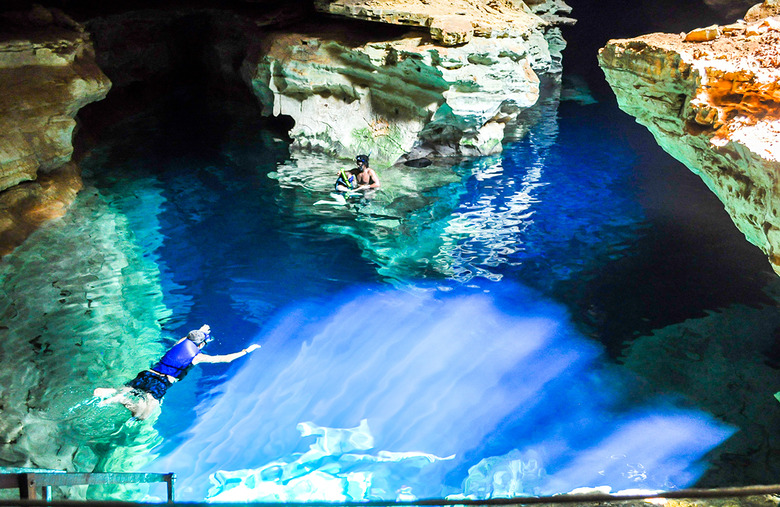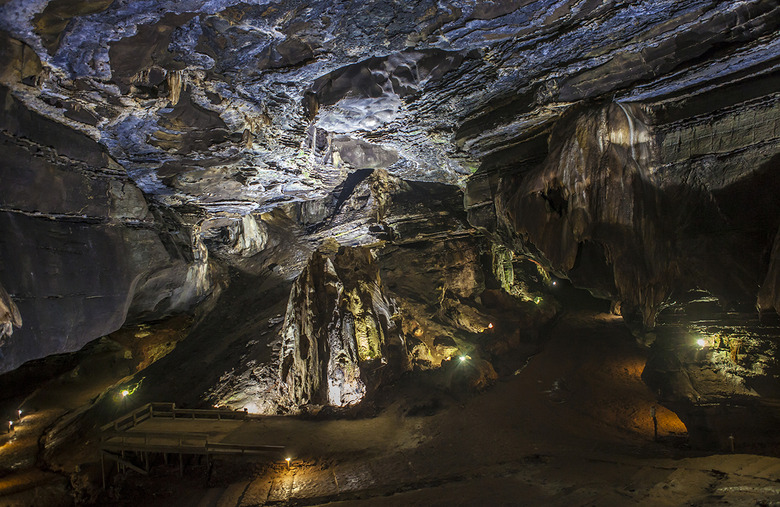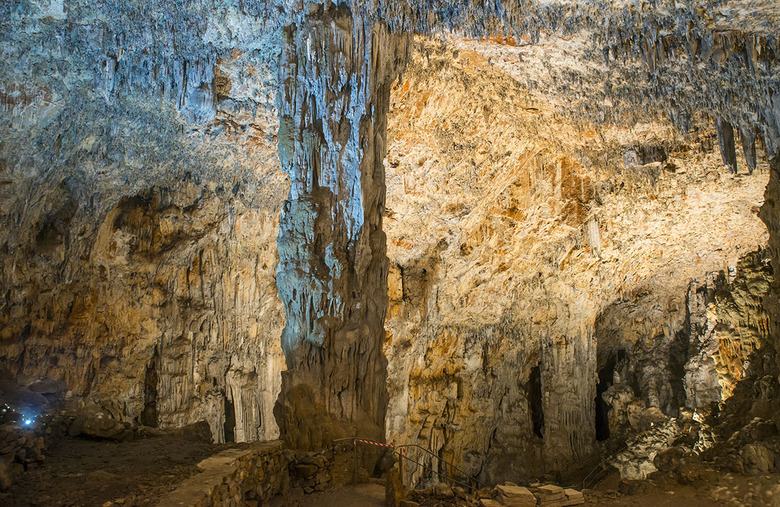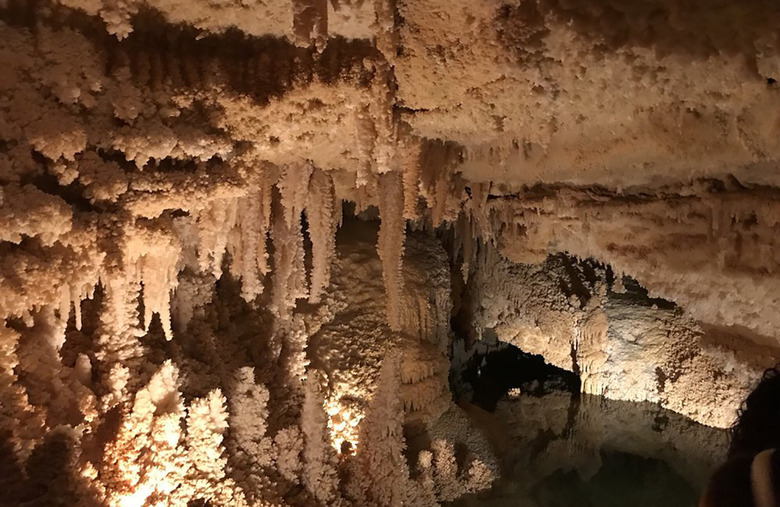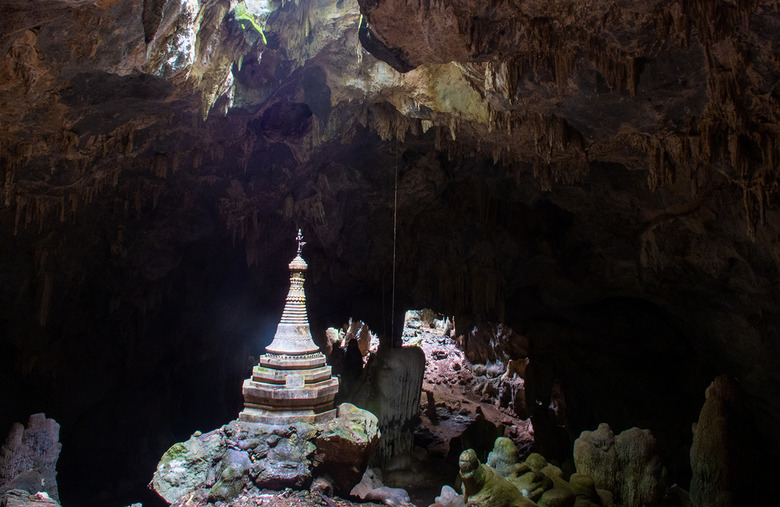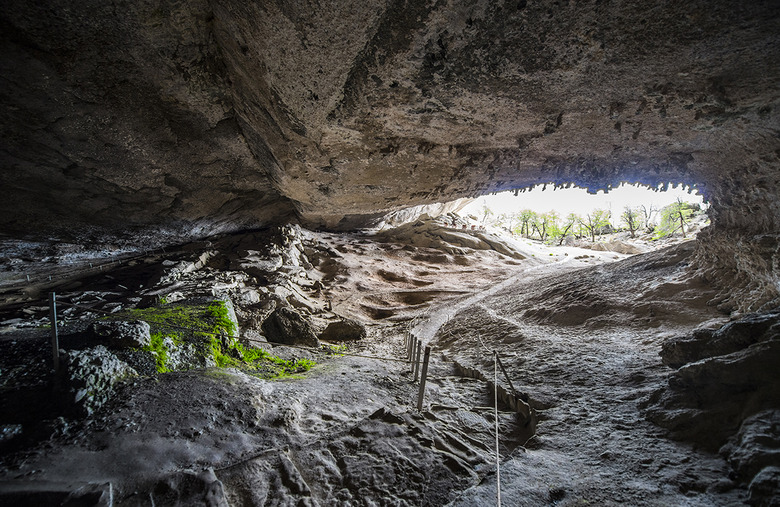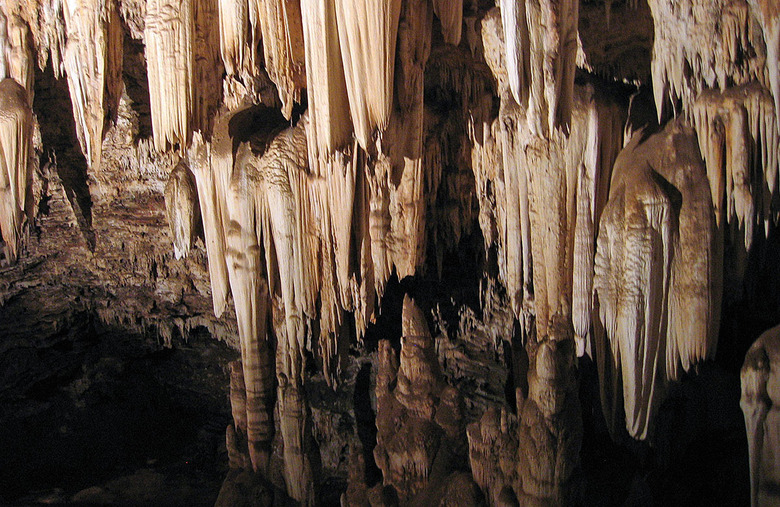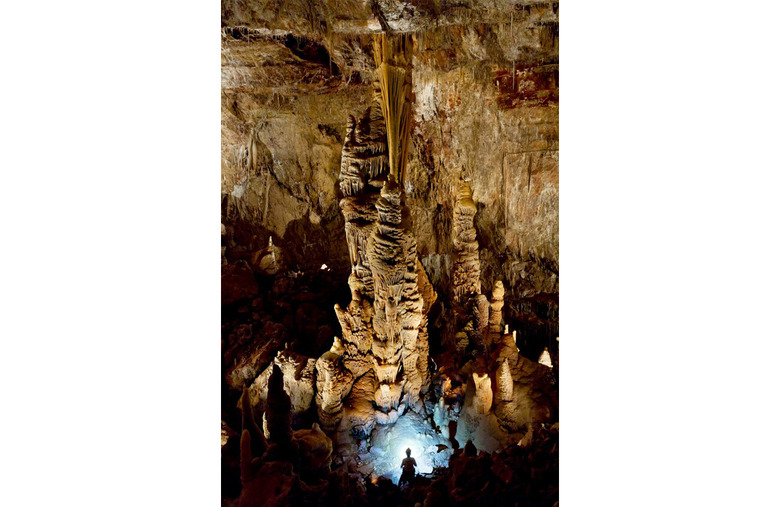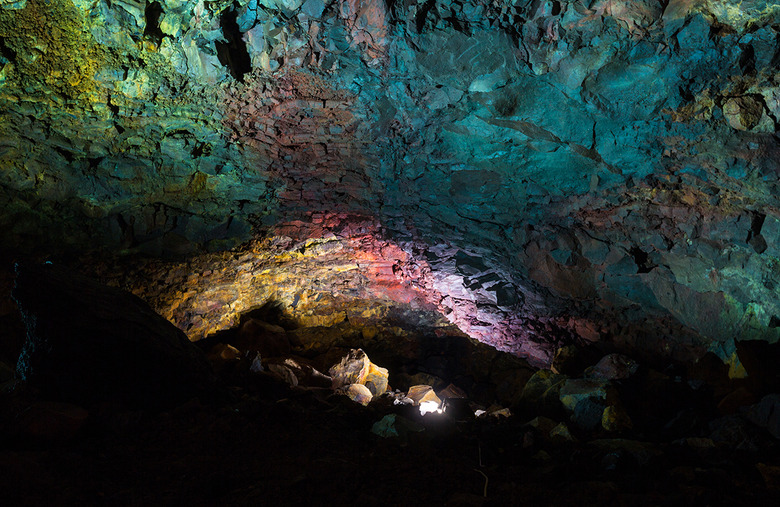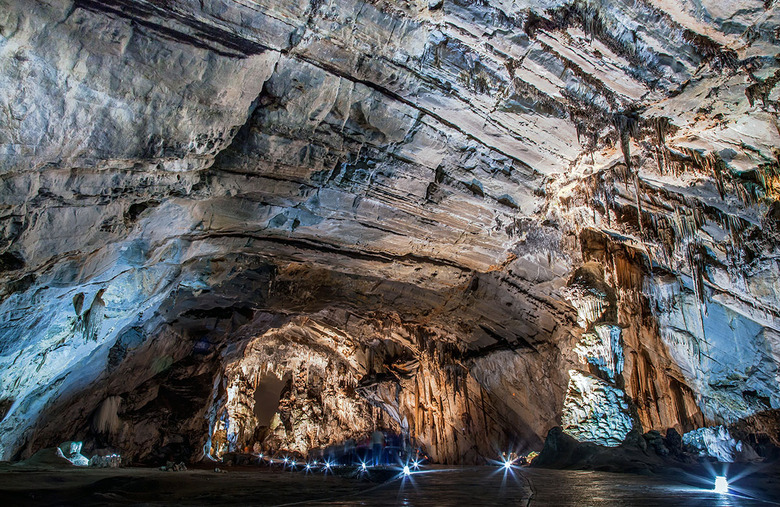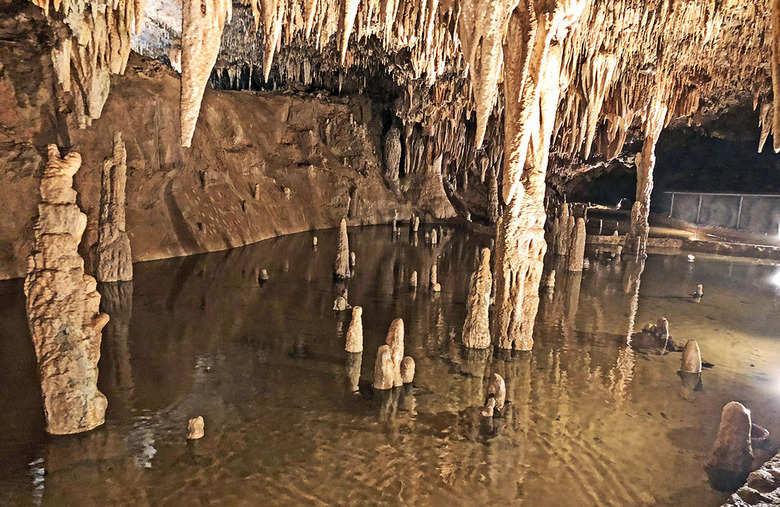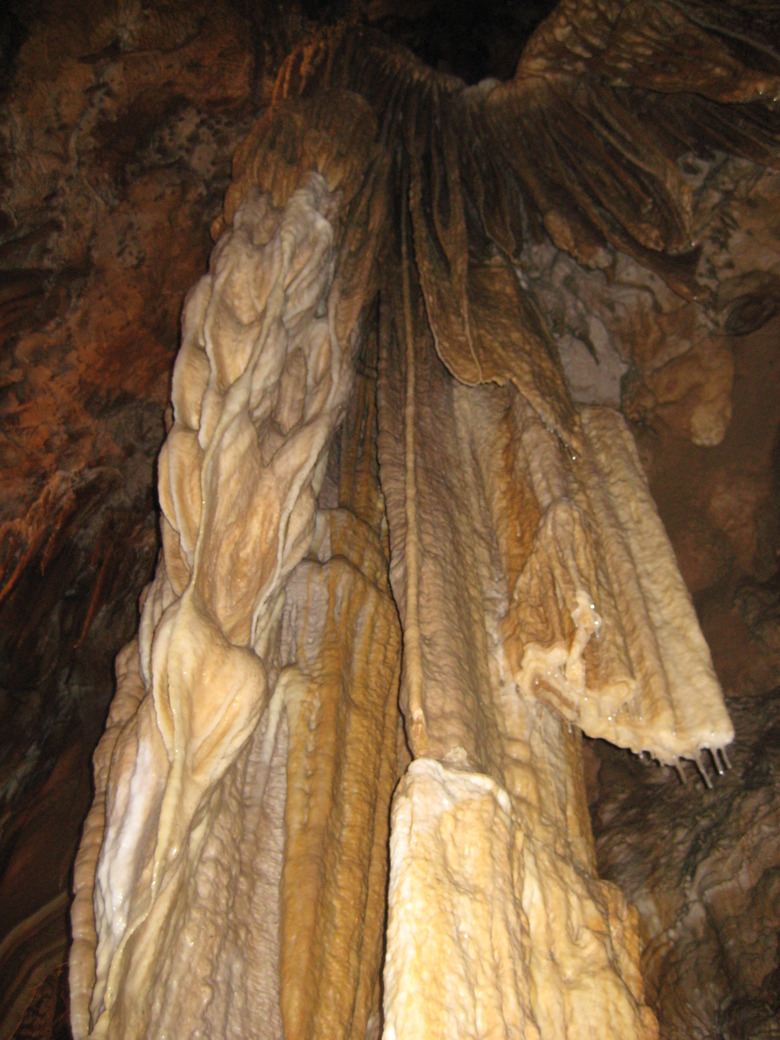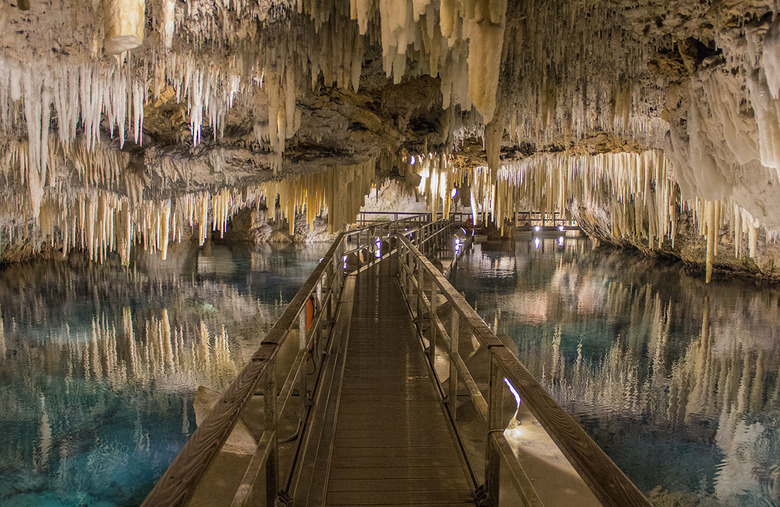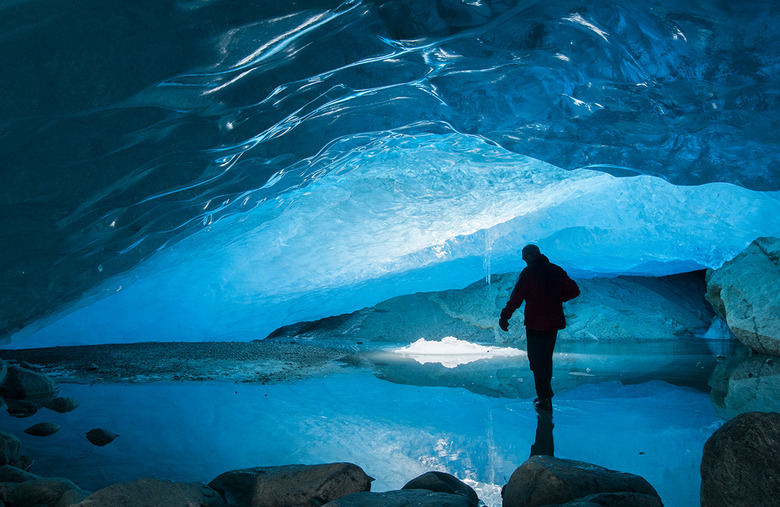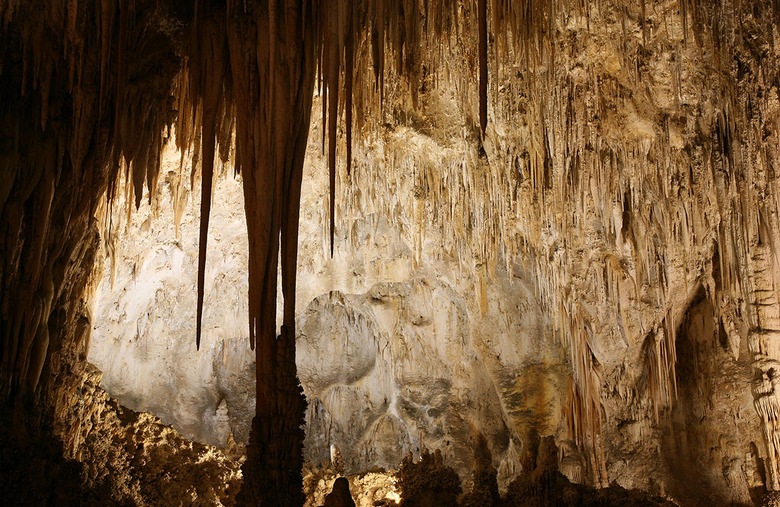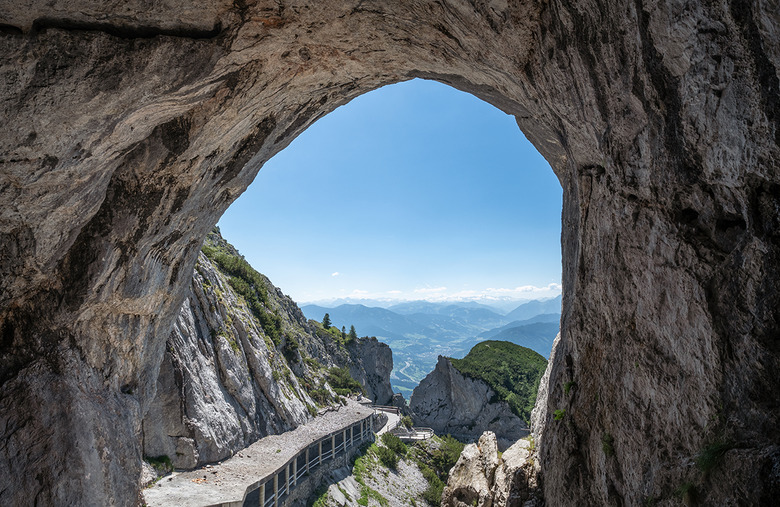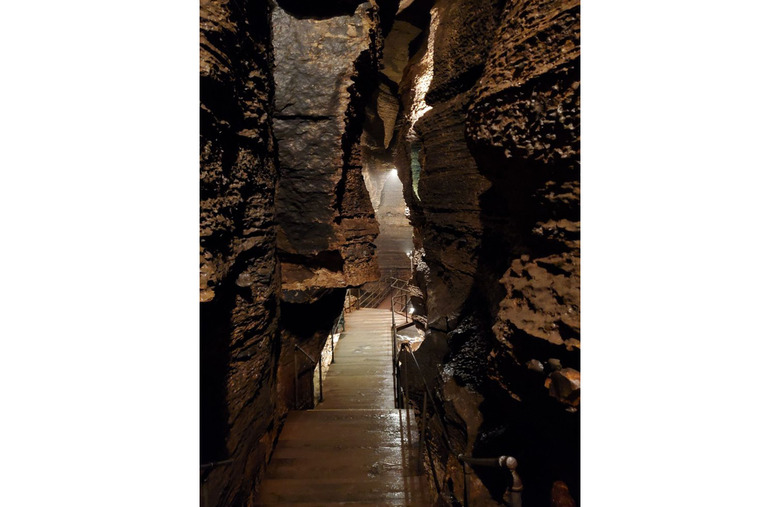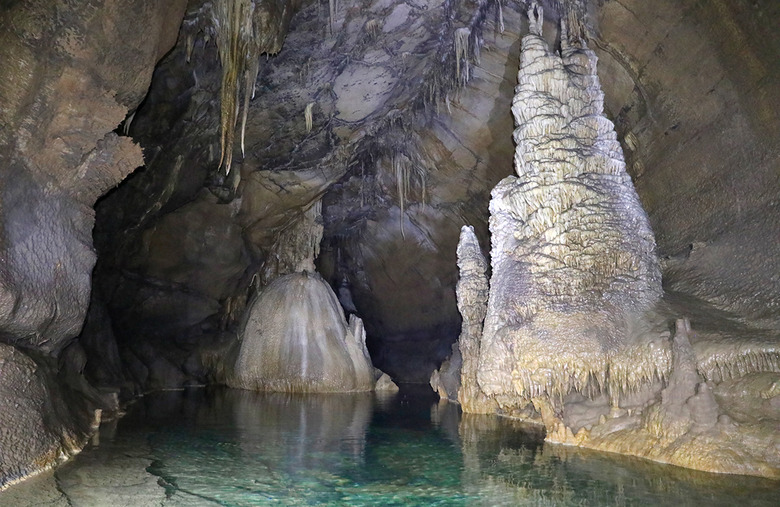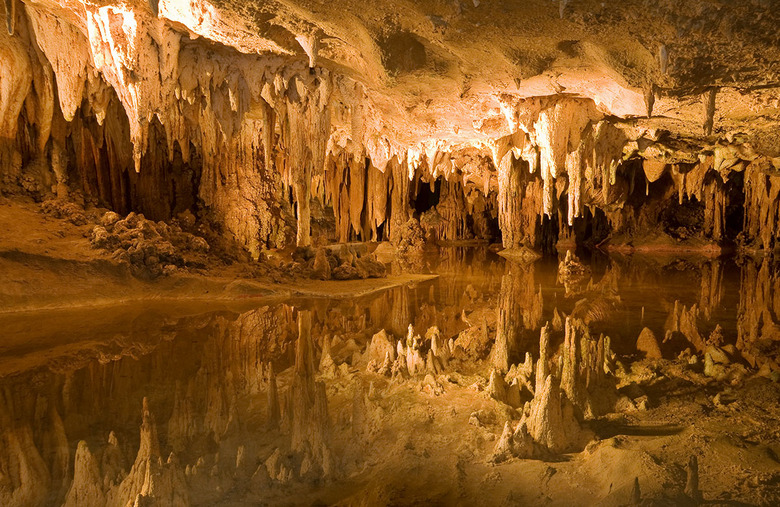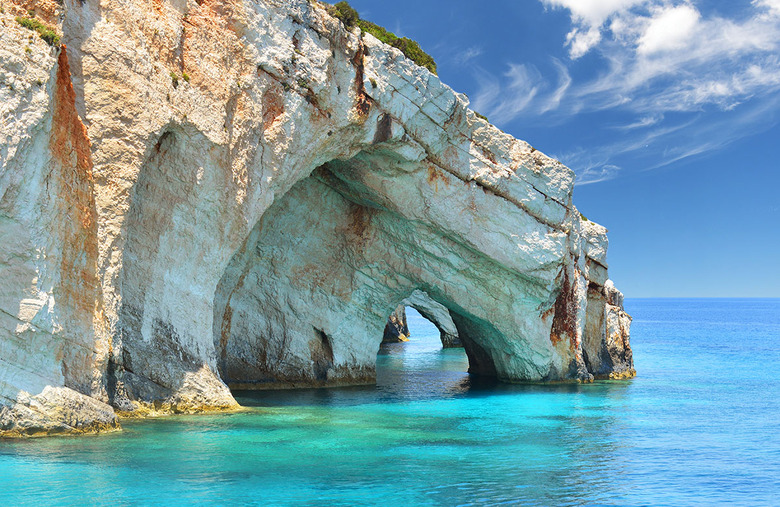The Best Caves In The World
Caves are some of the most beautiful natural wonders on Earth. Some are made in an instant while others have been thousands or even millions of years in the making. Thanks to their amazing underground waterfalls, colorful rock formations and more, these are some of the most unbelievable natural and man-made caves in the world.
Tham Nam Lot (Thailand)
Thailand may be home to some of the most beautiful waterfalls in the world, but it also has some of the coolest caves. Tham Nam Lot cave is full of large stalactites and stalagmites. It used to be a dwelling place of prehistoric people, and archaeologists have found ancient clay pottery and wooden coffins.
Marble Caves (Chile)
There are tons of beautiful photo spots in the United States, but some of them can't compare to the beauty of the Marble Caves in the Patagonia region of Chile. The caves are known for three swirling blue rock formations that reflect the vibrant blue waters of Lake General Carrera.
Reed Flute Cave (China)
The Reed Flute Cave near the city of Guilin, China, isn't just any kind of cave. The name comes from the reed grass that grows outside of the cave, which the locals would use to make flutes and pipes. This 600,000-year-old cave is full of zigzag walking paths, ponds, bridges and beautiful lighted formations.
Saalfeld Fairy Grottoes (Germany)
The Saalfeld Fairy Grottoes is an underground cave that has become one of the most popular tourist attractions in the Thuringia region of Germany. Though there may not be actual fairies flying around in the cave, it is filled with gorgeous colorful stalactites and stalagmites.
Hang Sơn Đoòng (Vietnam)
Hang Sơn Đoòng in Vietnam's Phong Nha-Kẻ Bàng National Park is the biggest known cave in the world. Underneath the majestic mountains of Truong Son, the cave has stalagmites that are the size of tall buildings and formations known as cave pearls that are the size of baseballs. The cave is even large enough to fit a 40-story New York City skyscraper.
Shell Grotto (England)
The origins of Shell Grotto in the seaside town of Margate, England, remain a mystery, but one thing is for sure: this charming cave isn't like other natural caves. The ceilings and walls are covered in intricate designs created out of millions of beautiful shells.
Postojna Cave (Slovenia)
Postojna Cave is the most visited tourist cave in Europe. It has an underground railway that offers a scenic train ride. The railway has been operating for more than 140 years and goes through different corridors and past features such as a more than 50-foot-tall stalagmite called the Skyscraper.
Mendenhall Ice Caves (Alaska)
For a state that gets the most snowfall, it's not surprising to find fascinating frozen caves made out of ice. Located inside of the Mendenhall Glacier are the Mendenhall Ice Caves. Only 12 miles from downtown Juneau, Alaska, these stunning caves have frozen bright blue ceilings that are breathtaking and surreal.
Waitomo Glowworm Caves (New Zealand)
The Waitomo Glowworm Caves are one of New Zealand's most dazzling natural wonders. The ceilings of the caves get their illuminating glow from glowworms, tiny radiant creatures that live there. Glowworms are actually the larvae stage of an insect called the fungus gnat. These insects naturally excrete an enzyme that gives off a blue-green light.
Blue Grotto (Capri, Italy)
Italy is known for food, wine and some of the most gorgeous sunsets in the world, but the country is also home to an amazing blue cave on the island of Capri. The Blue Grotto is a natural sea cave that is 197 feet long and 82 feet wide. The vibrant blue water inside the cave comes from the sunlight that enters from an underwater opening at the cave's mouth.
Fingal’s Cave (Scotland)
Fingal's Cave on the uninhabited Isle of Staffa is one of the best-known caves in Scotland, and it's also one of the strangest natural wonders in the world. Standing more than 200 feet tall, this cave was formed from hexagonal columns of basalt that look like an ancient work of art you may find in a museum.
Ape Cave (Washington)
Ape Cave is actually a lava tube formed during an eruption of Mount St. Helens in Washington over 2,000 years ago. After the outer crust of lava cooled, the molten lava inside continued to flow, creating the longest lava tube in the continental U.S. You won't find the animal that it shares a name with hanging around the cave. The cave's name actually comes from the St. Helens Apes, a youth group that first explored the cave in the early 1950s.
Škocjan Caves (Slovenia)
One of the most beautiful places you can find in Slovenia is the Škocjan Caves. This system of caves forms the largest known underground canyon in the world. There are trails that lead to incredible bridges with vistas of waterfalls as well as giant stalactites and stalagmites.
Mammoth Cave (Kentucky)
Located in Kentucky's Mammoth Cave National Park, Mammoth Cave is surrounded by 53,000 acres of beautiful forest. This cave is over 400 miles long, making it the longest known cave system in the world.
Barton Creek Cave (Belize)
Belize may be known as home to some of the most beautiful coral reefs in the world, but there is plenty of beauty above water as well. Barton Creek Cave is nearly 5 miles long and includes artifacts from ancient Mayan history, including Maya ceramics and calcified skeletons.
Longhorn Cavern (Texas)
Texas is home to one of the weirdest museums you won't believe exist, and it's also home to some mind-blowing caves. Longhorn Cavern is located in Longhorn Cavern State Park, which is less than 90 minutes away from Austin. This underground wonder is filled with hundreds of calcite crystals.
Puerto-Princesa Underground River (Philippines)
The Philippines has some of the prettiest waters in the world, and that includes the gorgeous Puerto-Princesa Underground River. Located within a national park, this underground river is about 5 miles long and is filled with remarkable and eye-catching rock formations. There are also several large chambers that are as high as 197 feet and 394 feet wide.
Jewel Cave (South Dakota)
The true jewel of the Black Hills of South Dakota can be found below Jewel Cave National Monument. There are plenty of hiking trails within the 1,279-acre park, but the main attraction is underground. Jewel Cave is the third-longest cave in the world. It got its name from the calcite crystals that line its walls.
Caves of Chapada Diamantina National Park (Brazil)
Chapada Diamantina National Park is one of the most popular tourist attractions in Brazil thanks to its abundance of flowers and nature. Not only are there beautiful caves in between the mountains, but there are also ancient gold mining trails, vibrant blue pools and waterfalls.
Sudwala Caves (South Africa)
South Africa has some of the best spots in the world to catch a beautiful sunrise as well as one of the oldest cave systems on Earth. Near the city of Nelspruit, the Sudwala Caves formed about 240 million years ago and have plant fossils called Collenia located in the caves.
Vilenica Cave (Slovenia)
Though the true role of Vilenica Cave in the Karst region of Slovenia still remains a mystery, it is believed that this cave once was used as a shelter or temporary housing due to the artifacts found in its chambers. This cave is the oldest show cave in Europe — tours were offered as far back as 1633.
Caverns of Sonora (Texas)
There's beauty lurking underneath the hills and deserts of the Lone Star State. Halfway between San Antonio and the underrated Big Bend National Park is the Caverns of Sonora. It wasn't until the early 1920s when locals first decided to explore the cave. Found inside the cave were plenty of passageways and a 50-foot-deep pit named the Devil's Pit.
Padalin Caves (Myanmar)
One of the most mesmerizing sights in the country of Myanmar are the Padalin Caves. They are made up of two limestone caves that are 98 feet apart. The smaller cave resembles a rock shelter while the larger cave contains nine chambers and three huge sinkholes. Wall carvings made with primitive weapons and tools from the Neolithic era can be found in the caves.
Cueva del Milodón (Chile)
Cueva del Milodón is a must-see place in Torres del Paine, Chile. It is made up of three caverns that are still intact. Right at the entrance of this majestic cave is an odd-looking rock formation called the Devil's Chair. According to myths, the devil himself used to inhabit the cave.
Wonder Cave (South Africa)
The Wonder Cave in the Gauteng province of South Africa is believed to be 2.2 million years old, far older than the world's oldest man-made structures. Not only does it have amazing dripstone formations, but it is also home to a bat colony.
Kartchner Caverns (Arizona)
Some of the most stunning botanical gardens in America can be found in Arizona, but that's not the only natural beauty you will find there. Southern Arizona is also home to the Kartchner Caverns, which is a massive limestone cave system. Not only does it feature a remarkable ecosystem, but it also has the largest stalactite formation in the world.
Thrihnukagigur (Iceland)
Thrihnukagigur crater outside of Reykjavík, Iceland, was formed from a volcano that erupted about 4,000 years ago and is now dormant. It includes a rare intact magma chamber that allows visitors to view the inside of a volcano. The ground space inside the volcano is equivalent to the size of three basketball courts, and it is also tall enough to fit the Statue of Liberty.
Cacahuamilpa Cave (Mexico)
The Cacahuamilpa Cave in Cacahuamilpa Caves National Park near the charming small town of Taxco, Mexico, is part of an infinite system of tunnels and caverns that connect to chambers and underground halls. These halls were once used as an awe-inspiring place of worship by the Chontales tribes to honor the gods of the underworld.
Meramec Caverns (Missouri)
It may not be located in the prettiest town in Missouri, but the breathtaking beauty of the Meramec Caverns isn't something to take for granted. These caverns comprise the largest commercial cave in Missouri, which is nicknamed the Cave State for its thousands of caves. The entire cave stretches past the height of a seven-story building.
Kostanjevica Cave (Slovenia)
One of Slovenia's hidden gems can be found beneath the hills outside the town of Kostanjevica. Kostanjevica Cave is more than a mile long but cavers have yet to explore the entire cave system. This cave is rich in various stalactites and stalagmites, underground streams and more.
Crystal Caves (Bermuda)
Bermuda was once a popular island vacation destination and deserves a comeback due to its many beautiful features, including Crystal Cave. Bermuda's Crystal Cave was formed during the Ice Age but wasn't discovered until the early 1900s. This dramatic cave system has beautiful stalagmites and icicles of limestone dripping from the ceiling. It also features a floating bridge over a dazzlingly clear lake.
Blue Ice Cave (Norway)
Seeing the northern lights in Norway is a bucket list item for many people, but anyone looking to be dazzled by nature shouldn't miss the Blue Ice Cave as well. Surrounded by ice and snow, the cave is located underneath the Nigardsbreen glacier. The cave has naturally sculpted walls made out of ice that glow in different shades of blue.
Carlsbad Caverns (New Mexico)
New Mexico was one of the trendiest travel destinations of the 2010s thanks in part to its natural wonders. Known for its rocky canyons and desert wildlife above ground, the namesake feature of Carlsbad Caverns National Park is its hidden gem beneath the surface. The main cavern is one of over 300 limestone caves that formed about 265 million years ago.
Eisriesenwelt Cave (Austria)
Austria has stunning libraries to get lost in, but you can also get lost in the beauty of Eisriesenwelt Cave. It's an icy labyrinth that is more than 20 miles long and was formed about 100 million years ago.
Niagara Cave (Minnesota)
There are plenty of fun indoor places in Minnesota — and that technically includes Niagara Cave near the city of Harmony. Along with astounding stalactites and stalagmites, various fossils and a 60-foot waterfall can also be found in the cave.
Križna Jama Cave (Slovenia)
Križna Jama Cave is the only naturally preserved cave in Slovenia. This means that there are no concrete pathways or strong lighting to guide tours through the cave. The cave is home to 22 lakes as well as 45 different underground animal species such as cave hedgehogs, cave spiders, cave worms and many more.
Luray Cavern (Virginia)
It may not be Virginia's most iconic landmark, but Luray Cavern is a can't-miss stunning sight. This more-than-140-year-old attraction is one of the few underground caves with well-lighted, all-paved walkways. Inside, the ceilings stretch about 10 stories high and the cave is filled with stone columns and crystal clear pools.
Blue Cave (Greece)
The Blue Cave is the center of attention in the Keri peninsula in Greece. The cave's crystal-clear blue water reflects its colors along the surrounding rock formations. The stunning sea cave has awe-inspiring stalactites hanging from ceilings within rock cavities as well as a seabed lined with coral. To see more amazing formations beneath the water, check out photos of the most beautiful coral reefs in the world.
More Active Times:
Amazing Bridges Around the World
National Parks That Are the Hardest to See
The World's Most Gorgeous Golf Courses
